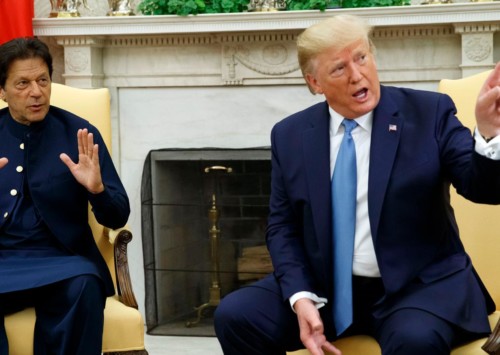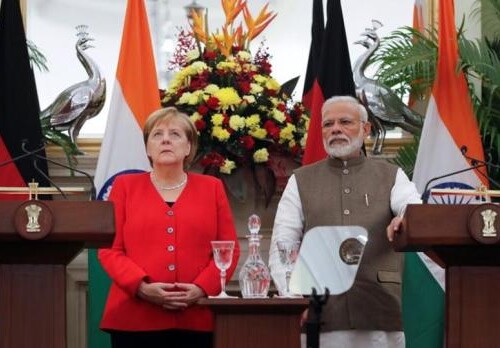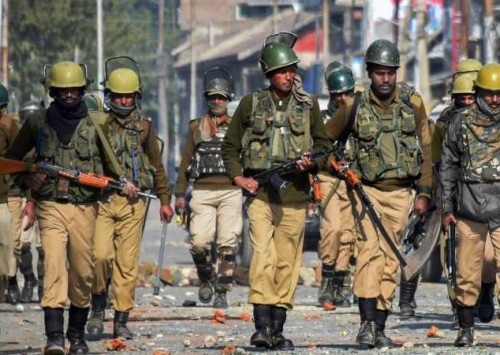Kartarpur corridor: a curious dilemma, if there has been one
For more than seven decades and indeed, even before the events leading up to Partition, Sikhs have traditionally pleaded for access to their gurdwaras in Pakistan Punjab and Darbar Sahib topped that list.
Make an offer you can’t refuse. With the opening of the Kartarpur corridor, Pakistan has done just that. For New Delhi to say no to Islamabad’s offer of allowing religious Sikh jathas (an armed body of Sikhs) to visit Guru Nanak’s final resting place across the border from Gurdaspur, was not an option. And Pakistan knew it, as well as India.
Little surprise then that the first batch of the Indian Sikh pilgrims who entered Pakistan through the corridor, which links Gurdwara Darbar Sahib in Pakistan’s Narowal district to Dera Baba Nanak shrine in Punjab’s Gurdaspur, comprised the country’s leading political Sikhs.
Apart from former Prime Minister Manmohan Singh, it included Punjab chief minister Amarinder Singh, former Punjab chief minister Parkash Singh Badal, son Sukhbir Singh Badal, Harsimrat Kaur Badal, cricketer-turned-politician Navjot Singh Sidhu, Akal Takht Jathedar Harpreet Singh and Gurdaspur BJP MP Sunny Deol, who is not a Sikh.
The coming together of so many politicians across the political divide – never an easy task – suggests the significance of this holy corridor. For more than seven decades and indeed, even before the events leading up to Partition, Sikhs have traditionally pleaded for access to their gurdwaras in Pakistan Punjab and Darbar Sahib topped that list.
While it is still early to reach a definitive conclusion, the opening of the holy corridor presents a chance for the two estranged neighbours and nuclear powers, India and Pakistan, to build bridges. Manmohan Singh expressed the hope that the event is significant as this offered a chance for the two countries to come together.
Much will, however, depend upon Pakistan. On the day of the inauguration, the respective positions of the two countries stood out in contrast. While Prime Minister Narendra Modi – not particularly regarded as a dove on Pakistan – chose to talk of the friendship opportunities that this sharing of the Kartarpur space represented, the Pakistani foreign office indulged in blatant brinkmanship by bringing up Ayodhya and the ‘status’ of minorities in India, both wholly unrelated to the events taking place in Punjab.
In the days leading to the opening up of the Kartarpur Sahib corridor, Punjab chief minister Amarinder Singh had lashed out at Islamabad over a video clip that featured Khalistani separatists. He said that this revealed Pakistan’s hidden agenda in opening the Kartarpur corridor.
The video was released by Pakistan early last week, days ahead of the inauguration of the corridor and showed a poster of a banned pro-Khalistani group, Sikhs for Justice, which is pushing for Sikh Referendum 2020 as part of its separatist agenda.
Later, in a strongly-worded statement, Singh warned against the ‘agenda’ of Pakistan’s Inter-Services Intelligence (ISI) behind Islamabad’s decision.
Concurs Mumbai-based analyst Rajan Khanna, “Since when have the Pakistanis become so fond of Sikhs? Historically, it is the Sikhs who gave Islamic invaders a bloody nose. This is a ploy to keep alive the Khalistani movement through any means, particularly in Punjab.”
While bilateral ties between the two countries have dipped to an extreme low in the last few years, Pakistan has not let the construction of the Kartarpur passage become a hostage to relations between the two countries. This has given rise to suspicion that the country’s spy agency ISI was always keen to see this project go ahead. Pakistani foreign minister Shah Mehmood Qureshi has on more than one occasion challenged India to call off its Sikh pilgrims or go back on its commitment to Kartarpur. He has proved to be right.
Interestingly, many hitches need to be ironed out before the visit becomes a well oiled and institutionalised operation. In the first few days, only a few pilgrims have made the trip through the Kartarpur corridor to Gurdwara Darbar Sahib.
On Monday, only 130 visitors went to the gurdwara in Pakistan via the corridor, and on Sunday, the first day the corridor was open to regular pilgrims, 229 used it. Around 600 pilgrims are to cross over on Tuesday, the 550th birth anniversary of Guru Nanak Dev, according to sources.
In contrast, crowds for a ‘binocular darshan (visit)’ of the holy site from the Indian side have increased in the last two days to over 5,000 daily from the earlier number of 250. Officials say that a digital record of anyone visiting Pakistan is a major deterrent for those wanting to travel to the West and US and could possibly account for the low number of those wanting to use the corridor, particularly the young crowd.













